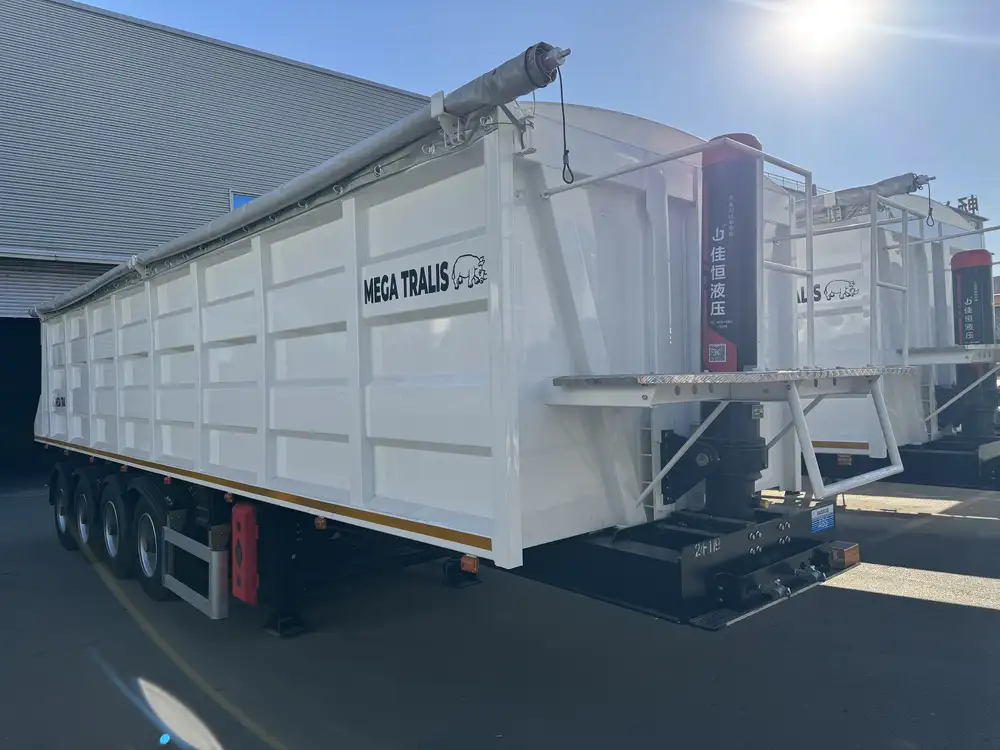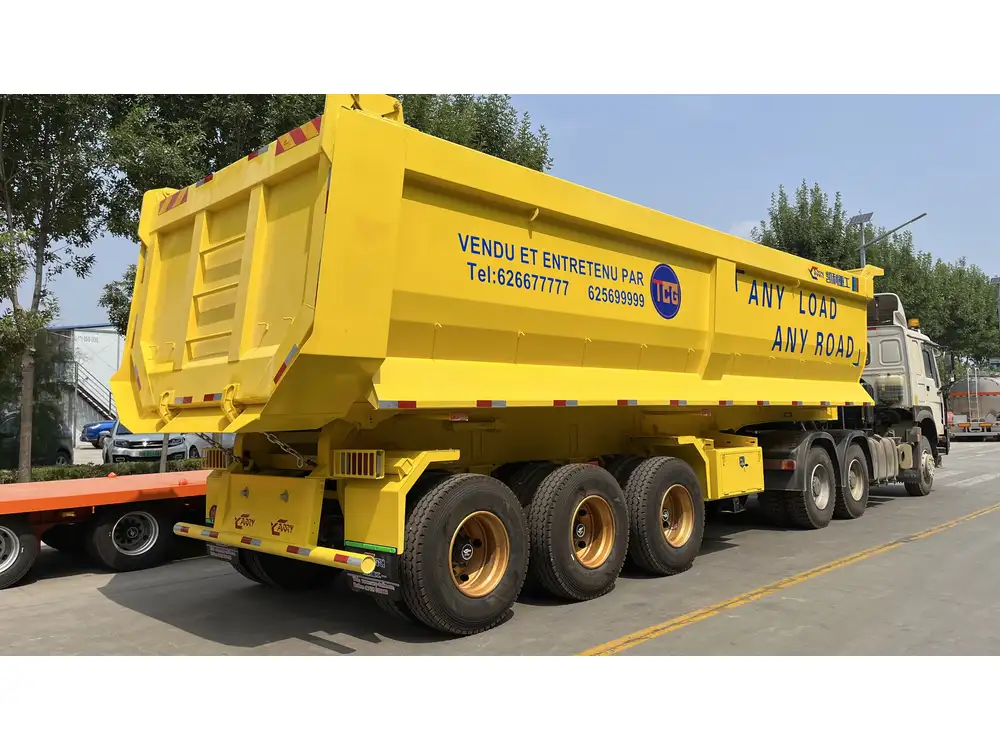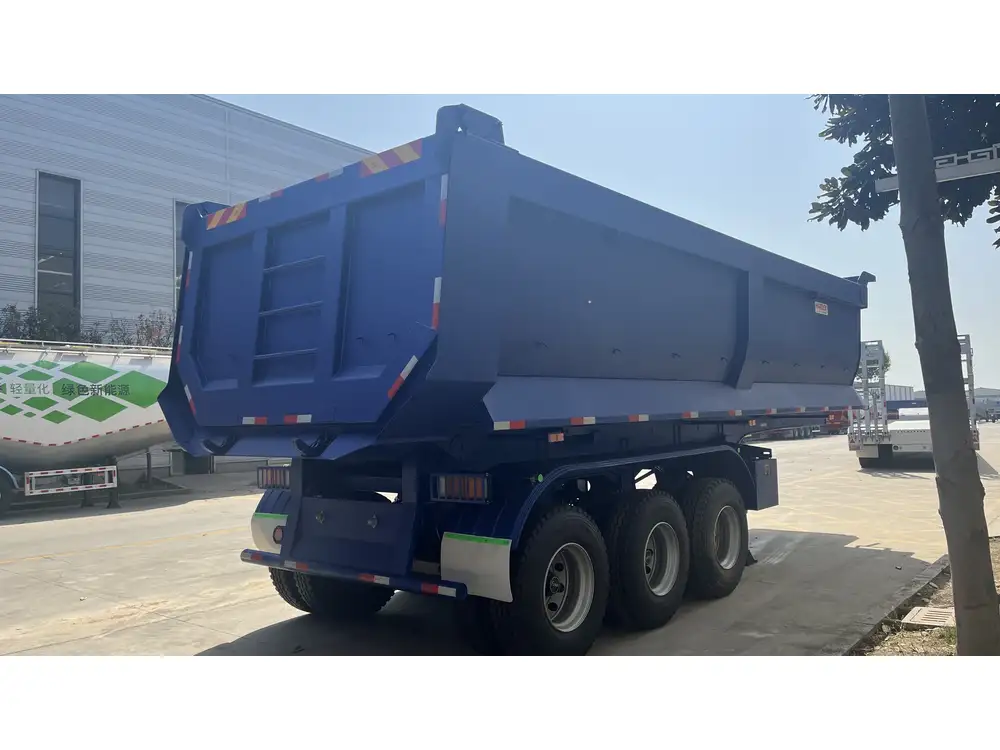The world of logistics and transportation is not just about moving goods; it’s about efficiency, reliability, and profitability. One of the essential assets for any trucking business is a semi-trailer. Understanding the costs involved in acquiring a new semi-trailer is crucial for making an informed purchase decision. In this detailed guide, we dissect the various factors that influence the cost of new semi-trailers, compare different types, and provide tips for maximizing your investment.
1. Overview of Semi-Trailer Types and Their Implications on Cost
Semi-trailers come in various types, each designed for specific transport needs. The cost varies significantly based on the type of trailer selected, the materials used in construction, and the manufacturer.
| Type of Semi-Trailer | Description | Average Price Range |
|---|---|---|
| Flatbed Trailers | Open deck trailers without sides or a roof. Ideal for carrying oversized loads. | $25,000 – $50,000 |
| Dry Van Trailers | Enclosed trailers perfect for transporting goods that need protection from elements. | $30,000 – $60,000 |
| Reefer Trailers | Insulated trailers designed for transporting temperature-sensitive goods. | $40,000 – $80,000 |
| Tanker Trailers | Used for transporting liquids, gases, and bulk materials. Specialty construction is required. | $50,000 – $100,000 |
| Dump Trailers | Trailers equipped with a hydraulic lift for unloading bulk materials. | $25,000 – $55,000 |
Factors Influencing Semi-Trailer Pricing
When considering the costs of a new semi-trailer, multiple factors come into play, significantly impacting the overall price:
- Material Construction: Higher quality materials typically lead to a longer lifespan and better performance but will also increase the initial cost.
- Customization Options: Tailoring a semi-trailer to meet specific needs, such as extra storage compartments or advanced tracking systems, can add significant charges.
- Load Capacity: The greater the load capacity, generally, the more robust the design—which translates into higher costs.
- Manufacturer Reputation: Established manufacturers might offer higher upfront costs due to brand value, warranty, and reliability over lesser-known brands.

2. Cost Analysis: Understanding the Pricing Structures
Base Cost vs. Additional Features
- Base Price: This entails the fundamental price of the semi-trailer according to the type.
- Add-Ons: Various features, such as brake systems, advanced lighting, or aerodynamic designs aimed at improving fuel efficiency, can significantly raise the final price tag.
Estimated Breakdown of Costs
| Cost Component | Estimated Cost Range |
|---|---|
| Base Price | $25,000 – $100,000 |
| Optional Features | $5,000 – $30,000 |
| Taxes and Fees | Varies by state/region |
| Delivery Charges | $1,000 – $3,000 |
| Insurance (1st year) | $1,500 – $3,500 |

Leasing vs. Buying: What’s the Best Financial Move?
Another critical consideration is the choice between leasing and buying a semi-trailer.
Buying and Ownership
- Pros: Full ownership, no monthly payments once paid off, potential for resale value.
- Cons: High initial outlay, maintenance responsibilities.
Leasing
- Pros: Lower initial costs, flexible terms, usually includes maintenance.
- Cons: No equity built, restrictions on modifications, continuous payments.
Ultimately, firm evaluation of your financial situation and long-term goals will guide this decision.

3. Financing Options for Purchasing Semi-Trailers
Navigating the financial aspects of purchasing a semi-trailer can be intricate, but numerous financing options might ease the burden:
Traditional Bank Loans
Secure loans through a bank or credit union, allowing for a set repayment period at a fixed or variable interest rate.
Special Financing Programs
Some manufacturers provide special financing offers that may include deferred payments or reduced interest rates, particularly for new businesses.

Leasing Arrangements
These can come in various forms, including operational leases and capital leases, each with different implications for ownership and tax reporting.
Government Grants or Loans
Occasionally, government programs exist to assist small businesses within the transportation industry with funding options or grants, especially for eco-friendly or innovative designs.
4. Factors to Consider Before Making a Purchase

Total Cost of Ownership (TCO)
Beyond the sticker price, elements such as maintenance, fuel efficiency, insurance, and depreciation must be considered. Utilizing a TCO analysis can provide insights into the long-term financial commitment associated with owning a semi-trailer.
| Cost Element | Estimated Average Annual Cost |
|---|---|
| Maintenance | $1,500 – $3,000 |
| Fuel Costs | $10,000 – $30,000 (varies by usage) |
| Insurance | $1,500 – $3,500 |
| Depreciation | 15% – 20% of initial cost annually |
Usage Patterns
Frequent heavy-hauling operations may necessitate robust, high-capacity trailers, while lighter, infrequent transport could allow for less costly options.
Regulations and Compliance
Understanding DOT regulations and any specific compliance requirements for the type of trailer is essential before making a purchase.

5. Maintenance and Operational Costs
Investing in a semi-trailer goes beyond the initial purchase price. Regular maintenance and operational costs are critical for longevity:
Routine Maintenance
Regular inspections, wheel alignments, and brake checks are vital. The average annual maintenance costs range from $1,500 to $3,000, based on usage and trailer type.
Operational Efficiencies
Consider trailers engineered for better fuel efficiency, which can reduce the overall operational costs significantly over time.

6. Future Trends in Semi-Trailer Pricing
Current trends in trailer technology include advancements aimed at enhancing fuel efficiency, safety measures, and materials used in construction. As electric and hybrid truck technologies become more prevalent, expect to see innovative designs in semi-trailers that could influence pricing positively:
- Eco-friendly Materials: Investment in sustainable materials could increase upfront costs but lead to savings in the long run through reduced fuel usage and regulatory compliance.
- Smart Technology: Incorporating IoT and smart systems may increase initial costs but lead to operational efficiencies and savings over time.
7. Conclusion: Making an Informed Purchase
Determining “how much does a new semi-trailer cost” is a multifaceted inquiry that requires careful consideration of various price factors, financing options, and potential long-term costs. By analyzing the types of semi-trailers available, understanding the components influencing costs, and exploring financial avenues, businesses can make informed decisions that align with their operational needs and financial capabilities.
Ultimately, careful planning will arm you with the insights necessary to navigate the complex landscape of semi-trailer acquisition, ensuring that your investment effectively propels your business toward success. As you move forward, take the time to compare multiple vendors, seek expert advice when needed, and keep abreast of industry trends to make the most of your procurement efforts.



